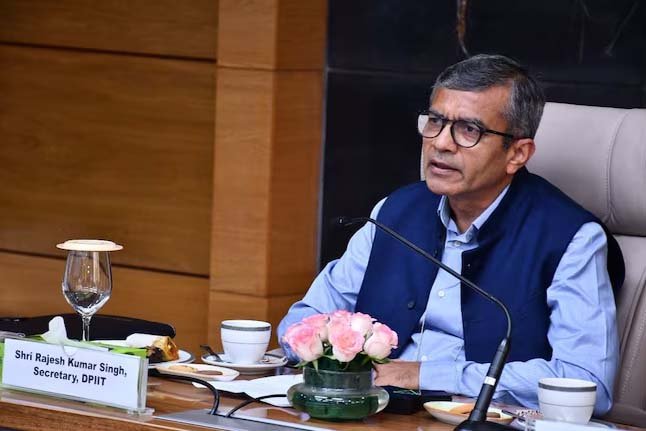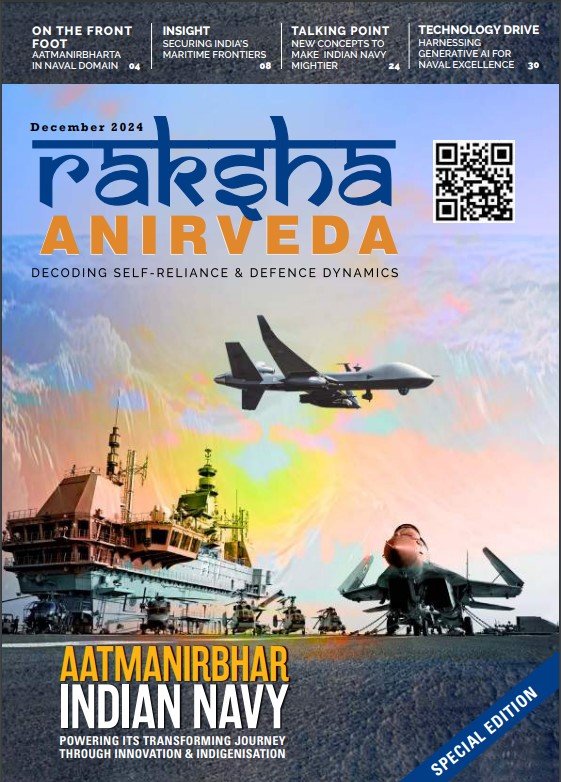New Delhi: Underlining the importance of preparedness, technology adoption, and self-reliance in defence, Defence Secretary Rajesh Kumar Singh called for enhanced collaboration among the public and private industry, research institutes like DRDO and the academia to increase the operational capabilities of the Armed Forces in today’s constantly evolving times.
Addressing the inaugural STRIDE 2025 seminar on the theme ‘Synergy of Technology, Research & Defence Ecosystem’ organised by Southern Command in Pune, Maharashtra on September 12, 2025, Defence Secretary said that the present technology disruption is increasingly changing not just the nature of warfare, but also the business of industry. He exhorted all the stakeholders to stay abreast of the latest technological trends and work together to achieve the goal of Aatmanirbhar Bharat.
He said, “Many countries are focusing on defence and hard power, and India is no exception given its neighbourhood. The recent operation highlighted areas for improvement and adaptation for future conflicts. The goal is to collaborate with ministries, academia, and research institutions to advance self-reliance.”
Emphasising that technological superiority and industrial strength often determine the outcome of war, and there is a need to ensure that the defence industry grows a pace with the rest of our manufacturing sector to achieve the goal of Viksit Bharat and $30 trillion economy by 2047. “The transition is critical to the broader issue of becoming a developed nation of innovation, enhancing India’s startup culture, widening our industrial base, increasing the share of manufacturing in our GDP, and generating employment and the spin-off benefits that come from the dual use of technology,” he added.
Rajesh Kumar Singh pointed out that the ongoing conflicts have resulted in competitive populism and economic protectionism around the world, accompanied by economic fragmentation, the decline of multilateral institutions, and a growing tide of nationalism. In this context, he said, “there is a need to back our soft power as hard power is becoming more and more critical.”
The Defence Secretary enumerated the steps taken by Prime Minister Narendra Modi-led Government to ensure that the country stays ahead in the technological race. The measures include the revision of the Defence Procurement Manual 2009 and Defence Acquisition Procedure 2020 to make them more dynamic, proactive, less process-heavy, and more focused on outcome.
“There is a need to reduce entry barriers for the private sector and start-ups, encourage grassroots innovation, and ensure competitive bidding. The intent is to broaden and diversify India’s defence industrial base,” he said.
The Defence Secretary added that while some immediate requirements of the armed forces were being met through emergency procurement, with powers to buy off-the-shelf equipment domestically or, if required, from abroad, the long-term aim was to develop indigenous solutions through the DRDO and ultimately achieve full self-reliance.
Appreciating the role of the private industry in bolstering the defence sector and making it self-reliant, Rajesh Kumar Singh urged them to increase investments in R&D and manufacturing capacity. He pointed out that the defence sector will not able to witness the scale of innovation and capability that the Armed Forces need, unless the private sector has the willingness to stay the mile and make investments.
“Defence is a domain wherein you get orders on a sporadic basis. but if you possess the technology and engineering strength, you will be able to sustain yourself through a combination of domestic and export orders,” he said.
Clarifying on India-US defence cooperation, Singh stated that there has been no spillover effect of trade tensions on military ties. “Our defence collaboration and talks have continued even during that period. Those trade tensions are also easing now, and we have resumed negotiations. Hopefully, it will be successful,” he said.
The engines from General Electric for the Light Combat Aircraft are being delivered, and India has also received two Apache helicopters for the Army during this period, he noted. “So, the defence collaboration will not have much impact,” Singh said, citing ongoing 2+2 ministerial and delegation-level talks between the two nations.
General Officer Commanding-in-Chief, Southern Command Lt Gen Dhiraj Seth in his address, highlighted the importance of a Whole-of-Nation approach to achieve self-reliance in defence capabilities.
Distinguished experts from the Armed Forces, veterans, scholars, representatives of DRDO, Public Sector Undertakings, private industry and academia, marked their presence at the event with the aim of charting a roadmap for an indigenous defence ecosystem covering R&D, production, maintenance, and innovation.
The seminar featured engaging panel discussions on key themes including:
- Fast-tracking niche technologies through reverse engineering and industry funding for academic research.
- Strengthening the role of DRDO in catalysing indigenous innovation.
- Accelerating defence manufacturing growth through enhanced collaboration among private industry, PSUs, and academia.
A vibrant equipment display was organised as part of the event, showcasing cutting-edge indigenous innovations, promoting collaboration and partnerships towards building future-ready capabilities.
The seminar reaffirmed Southern Command’s commitment to driving the vision of Aatmanirbhar Bharat, fostering synergy across stakeholders, and strengthening the national defence ecosystem at both regional & national levels.






